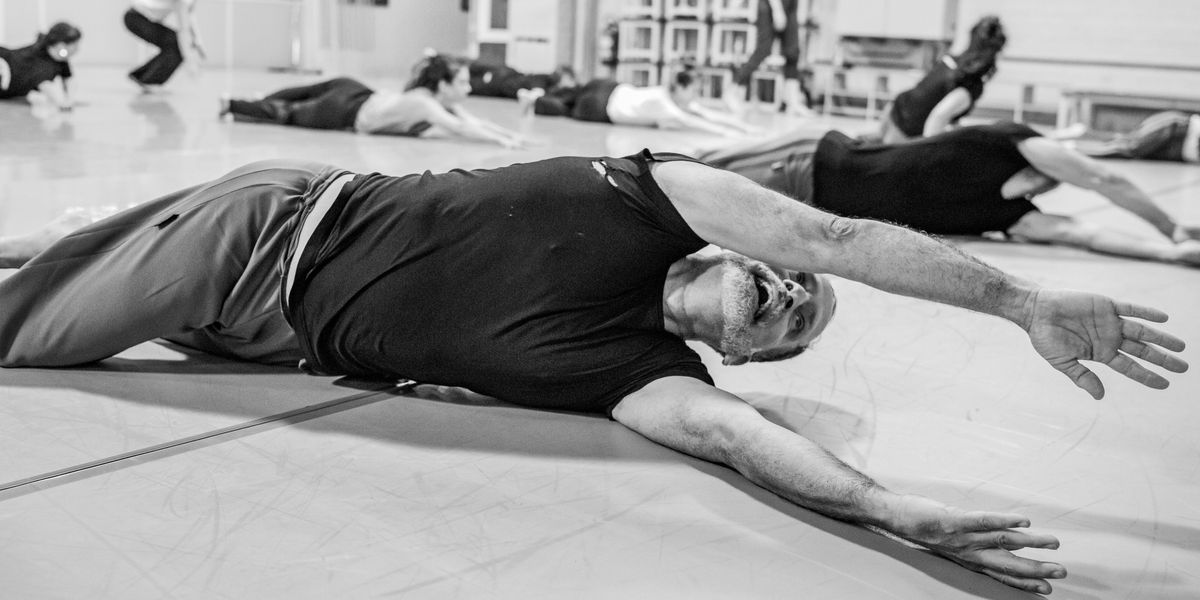How to Use the Floor More Efficiently—In Any Style
“Using the floor” means different things to different dancers. Ballet students are often encouraged to push or pull away from the floor, and modern and contemporary dancers tend to embrace it as a friend. Percussive dancers dig into it, scrape it, brush it and more. Whatever your relationship to the floor, “you can learn to use it effortlessly, to help your body move more efficiently,” says Kathleen Bower, director of dance medicine at Miami City Ballet.
Feet First
A dancer’s relationship to the floor usually begins with the feet: how you stand before you start to move. “Feel
that your feet are very connected to the earth,” says David
Zambrano, inventor of the Flying Low technique.
Charla Genn, a ballet teacher and dance rehabilitation specialist in New York City, encourages dancers to allow their feet to spread out on the floor, “like a duck.” A clenched foot is immobilizing, and leads to gripped ankles and hips. “Using the floor,” says Genn, “means that your joints are relaxed, so you can use your muscles.”

Go With Gravity
In his choreography, Zambrano harnesses the velocity of
the descent. “We can use it consciously, the free-fall energy,”
he says. “Instead of dropping on top of the floor, you choose which pathway you want to exit.” When transitioning from standing movement to floorwork, he recommends beginning to “fall” as if you were going to sit down. Then, rather than merely sitting, dive forward or off to one side, or roll through your back. This way the movement won’t stop at the floor’s surface, but instead maintains continuity.
“When gravity is pulling you down, you tend to be using the eccentric, or lengthening, contraction of the muscles,” Bower explains. “Think of it as your natural braking system.” Dancers preparing for a particular piece or a new kind of floorwork should seek out exercises, like squats, that strengthen eccentric control.

Don’t Push It
You don’t need to press down to go up in a relevé or a jump. “Every action has an opposite reaction,” says Genn, “so, yes, if we’re going up, something has to go down.” But she thinks of that downward reaction as a light electrical impulse. “It’s just energy, not a physical push.” Before jumps, resist the urge to plunge into an oversized plié. This pulls your spine out of alignment, which makes it harder to get off the floor.
Bower explains that when you push down against the floor to jump, it actually keeps the center of mass of your body low. Instead, try thinking of the floor as a spring or a trampoline: Just bounce lightly off of it. “Then you have that powerful glute-max/hamstring connection, you get the full extension through the hip, and you should actually see that your jumps are higher,” says Bower.

Stay Soft
Most dancers experienced in floorwork will tell you that, at first, it hurts the bones. Knees, shoulders and vertebrae get bruised. Zambrano recommends imagining your bones are rubber, and thinking of your movement as a spiral going continuously into and out of the earth, rather than on or against the floor. “You learn that it is possible to transform your energy into something softer,” he says. “And when that happens, all your joints say, ‘Yes, why not?’ ”
When doing floorwork, Bower advises watching the choreographer for movement quality rather than shapes and positions. Try dropping your “full-out” to 75 percent. Dancers trained to always give their all and bracing themselves for contact with the floor may find this a difficult concept. But in Bower’s experience, this tactic helps the body ease into a new sequence, and into the floor. “You can work back up to full-out, but you want to maintain that ease of movement.”
As for those bruises, Bower suggests gentle massage if it’s not too painful, and arnica gel or Voltaren.
Prepare Your Body
To help dancers condition for floorwork, physical therapist Kathleen Bower begins with a few exercises focusing on their hips, to target the posterior chain and strengthen the eccentric control of the glutes and hamstrings:
Hip Hinges:
These are like demi-pliés with your feet in parallel, except instead of moving the knees forward as they bend, send your pelvis back. Focus on keeping your lower legs perpendicular to the floor.
Dance Squats:
Increase the range of motion of the hip hinge, allowing the upper body and arms to move forward as a counterbalance.
Curtsy Squats:
Crossing one leg behind the other in parallel, “curtsy” all the way down to the floor, keeping the front foot flat, and then press back up to standing.
For the feet, Bower has an exercise series that she calls “toe yoga”:
• Sitting with feet flat on the floor, about one inch apart and parallel, try to lift your four outer toes, keeping the big toes on the floor. Then do the opposite, lifting only the big toes.
• Try to pull your big toes together. Then, keeping them together, attempt to lift them up.
• Lift all your toes, spread them out, and then relax them back to the floor, trying to keep space between each toe.
Teachers: For tips on how to help your students use the floor, visit dance-teacher.com.




